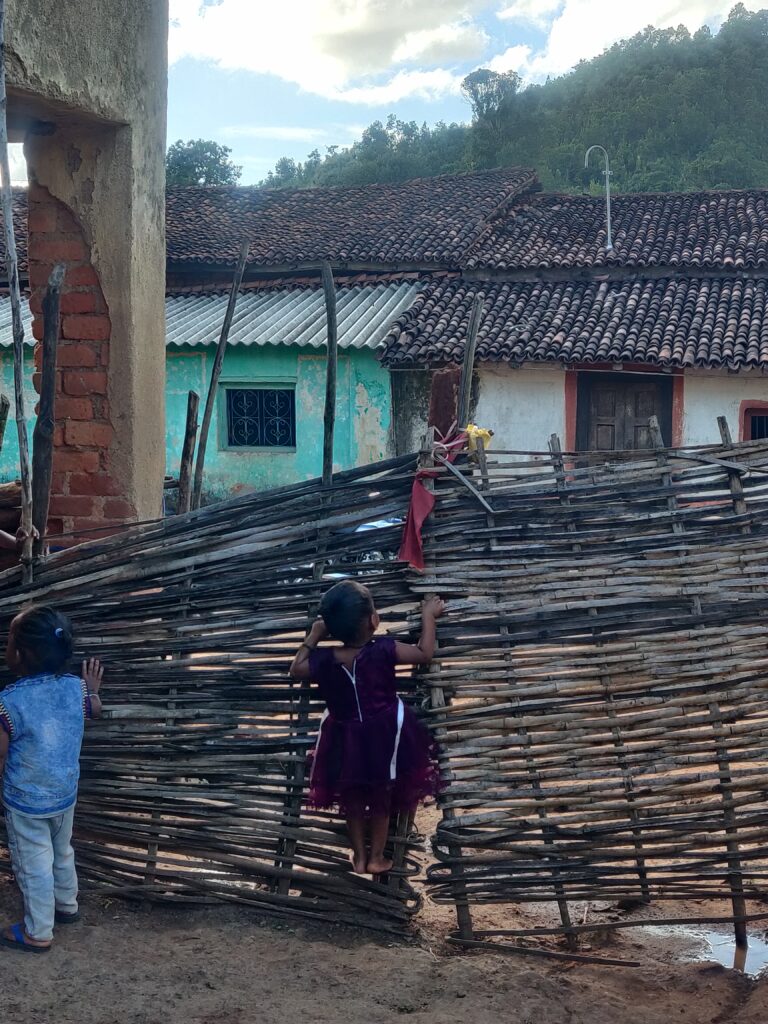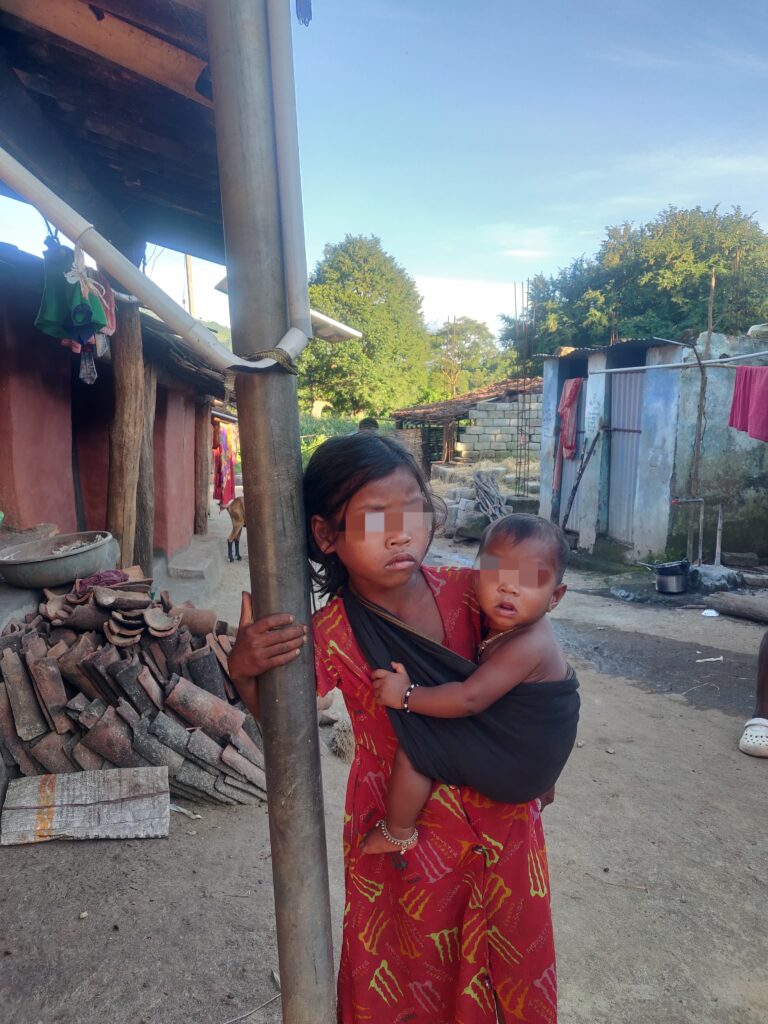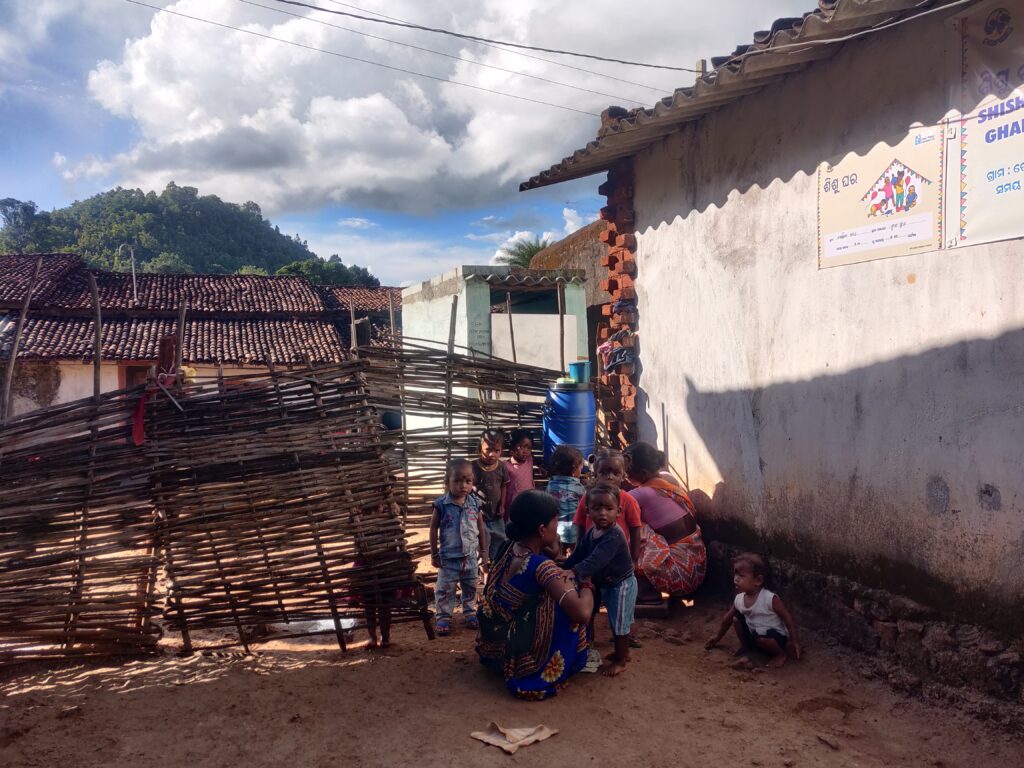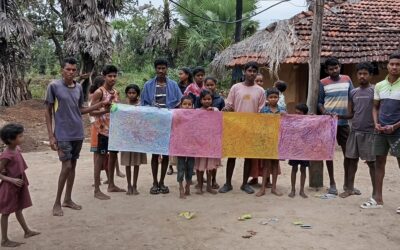When the Kids Cried
When I arrived in Kalahandi, I thought my biggest challenge would be fitting in. Outsider vibes, imposter syndrome, the works—I was prepared for it all. But instead, people here welcomed me with warmth and a lot of patience. It was the toddlers who broke me.
During one of my first crèche visits, I stepped into a room filled with 12 tiny humans, expecting giggles or at least curious glances. Instead, one child burst into tears. Within seconds, like a domino effect, every single one joined in. There I was, frozen in place, while the two caregivers valiantly tried to control the wailing. Some kids huddled together in fear; others tried to hide behind whatever they could find. The non-walkers sat there and bawled.



For the first time, I genuinely felt like I didn’t belong— because small children were afraid of me. Even after they stopped crying, they wouldn’t stop staring. If I moved closer, the cycle threatened to begin again. One caregiver eventually turned them around to distract them. It was humbling, to say the least.
Why The Crèches Matter
Despite my dramatic debut, I’ve come to understand that these crèches, or Sishu Ghars, are lifelines for the kids and their families. Set up by Swasthya Swaraj under the Rural Crèche Initiative by Azim Premji Foundation, they’re spaces where children aged 7 months to 3 years get proper nutrition, care, and early learning opportunities.
Here’s the thing: in these villages, both parents often work long hours in the dongars—fields deep in the hills—leaving young children behind. The result? Kids are either left with older siblings—who should be in school—or left alone. These crèches fill that gap, providing not just daycare but a platform for better health, growth, and education.

The Work Behind The Scenes
Setting up and running a crèche isn’t as simple as finding a space and opening the doors. First, the community needs to trust you. We’ve had to spend hours, sometimes days, talking to people about why these centres matter. And then comes the nitty-gritty:
- Finding the kids: A detailed listing is done to identify eligible children, focusing on those most vulnerable to malnutrition.
- Training the caregivers: Local women are trained in nutrition, hygiene, early childhood development, and even basic first aid and fire safety. Each crèche has two trained caregivers.
- Creating the space: Each crèche is a simple but functional setup—a mat-covered floor, a safe cooking area, and enough room for the kids to eat, nap, and play. Toys, picture books, and puzzles are provided to make learning engaging.
And the results are worth it. Each child gets a morning snack, a full meal, and an evening snack—meals designed to provide at least 60–70% of their daily calorie needs. Regular health check-ups are conducted by Swasthya Swaraj’s doctors and community nurses, and severely malnourished children are referred to hospitals when necessary.
The Challenges
It hasn’t been smooth sailing. Some of the biggest challenges include:
- Community resistance: Some parents were reluctant to send their children, either due to unfamiliarity with the concept or because they felt the kids were better off at home. It took months of discussions to convince them.
- Staff shortages: Finding women willing and able to work as caregivers hasn’t been easy. Training locals helps, but the demand still outweighs the supply.
- Logistical struggles: These are remote villages. Just getting supplies—food, medicine, even basic educational materials—takes effort, especially in areas with no proper roads.
- Malaria and seasonal illnesses: Outbreaks hit these communities hard, and keeping crèche children healthy requires constant vigilance. Caregivers are now trained in malaria prevention, and regular screenings are conducted.
- Infrastructure limitations: Many crèches lack proper toilets or running water, making hygiene a constant concern. Some centres are still functioning from temporary spaces because setting up a dedicated structure isn’t always feasible.
Looking Ahead
The plan is to expand to 60 centres in and around our project villages, but numbers alone aren’t enough. Increasing attendance, improving facilities, and strengthening parental engagement are just as important.
For me, this experience has been a constant learning curve. I came in worrying about being an outsider, but now I worry about whether we’re doing enough. Back home, I’ve seen children grow up surrounded by everything—fancy toys, books, learning apps, the best schools, the best food. Every milestone is celebrated, every opportunity within reach. Here, we struggle to provide even the basics—a safe space, one nutritious meal, a clean place to play. These kids deserve so much more, but even meeting their most fundamental needs feels like an uphill battle. The inequity is stark, and it’s something I can’t unsee.

And as for the toddlers? I think we’ve reached a silent agreement—if I don’t get too close too soon, they won’t cry. Fair deal.



0 Comments